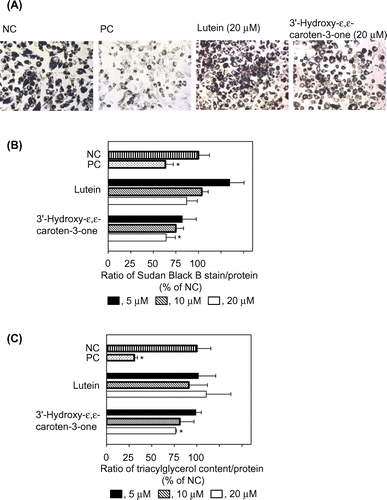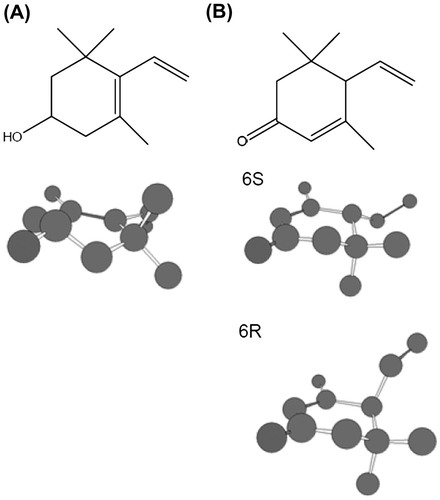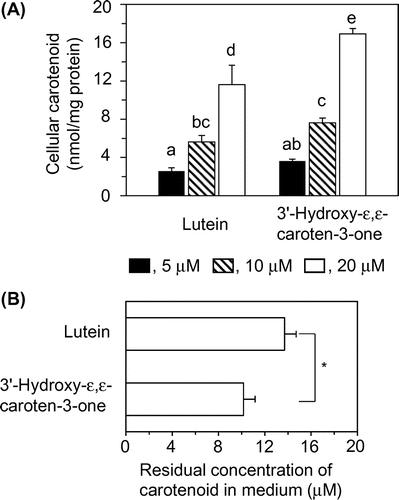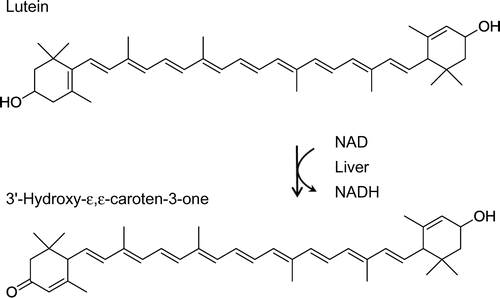Figures & data

Fig. 2. Effects of lutein and 3′-hydroxy-ε,ε-caroten-3-one on the differentiation of 3T3-L1 cells to adipocytes.

Fig. 3. End group structures optimized by AM1 molecular orbital calculations.

Fig. 4. Amounts of carotenoid in the cells and medium.


